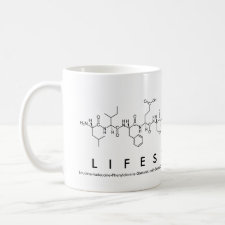
Authors: Li XJ, Zhou JJ, Tian L, Wang YF, Zhang BL, Zhang HP, Zhang QY
Article Title: Preparation of anti-nonspecific adsorption polydopamine-based surface protein-imprinted magnetic microspheres with the assistance of 2-methacryloyloxyethyl phosphorylcholine and its application for protein recognition.
Publication date: 2017
Journal: Sensors and Actuators B: Chemical
Volume: 241
Page numbers: 413-421.
DOI: 10.1016/j.snb.2016.10.105
Alternative URL: http://www.sciencedirect.com/science/article/pii/S0925400516317324
Abstract: A new anti-protein nonspecific adsorption polydopamine-based surface protein-imprinted magnetic microsphere was prepared by using surface imprinting and AGET-ATRP in this work. The highlights were as follows. Firstly, different from our previous work, we could guarantee that there was no anti-protein nonspecific adsorption MPC chain segment in the imprinted sites. This fact could eliminate the negative influence of MPC chain segment on imprinted sites and further ensure the high imprinting efficiency. Secondly, the length of MPC chain segment was optimized to weaken the influence of protein resistance effect on adsorption capacity on the premise of guaranteeing excellent anti-protein nonspecific adsorption. The results showed that the optimal dopamine layer thickness was 10 nm. The mass ratio of MPC and Fe3O4@SiO2@Pdop-MIPs-Br was determined as 12/1. Under such conditions, after the graft of MPC, the adsorption capacity of imprinted microspheres for BSA decreased only a little from 9.39 mg/g to 8.26 mg/g, whereas the imprinting factor increased markedly from 1.53 to 5.74, revealing the advantage of this work. Finally, the successful applications in protein recognition showed that the new strategy was expected to be an effective means for improving the detection sensitivity of molecularly imprinted biosensors
Template and target information: protein, bovine serum albumin, BSA
Author keywords: protein imprinting, Anti-nonspecific adsorption, 2-Methacryloyloxyethyl phosphorylcholine, Polydopamine, Recognition specificity



Join the Society for Molecular Imprinting

New items RSS feed
Sign-up for e-mail updates:
Choose between receiving an occasional newsletter or more frequent e-mail alerts.
Click here to go to the sign-up page.
Is your name elemental or peptidic? Enter your name and find out by clicking either of the buttons below!
Other products you may like:
 MIPdatabase
MIPdatabase









